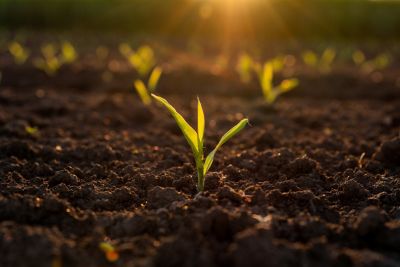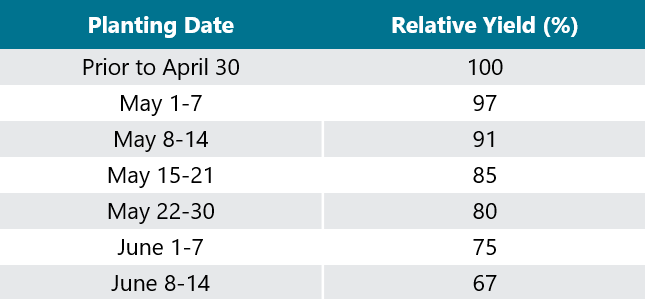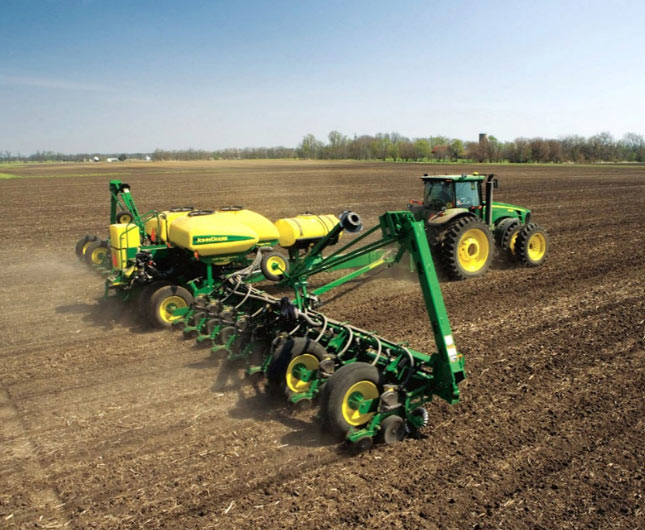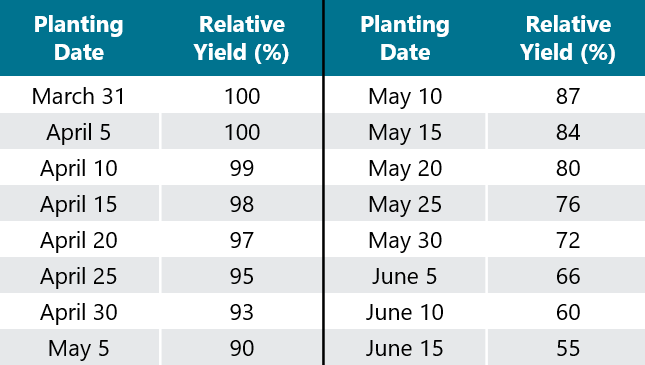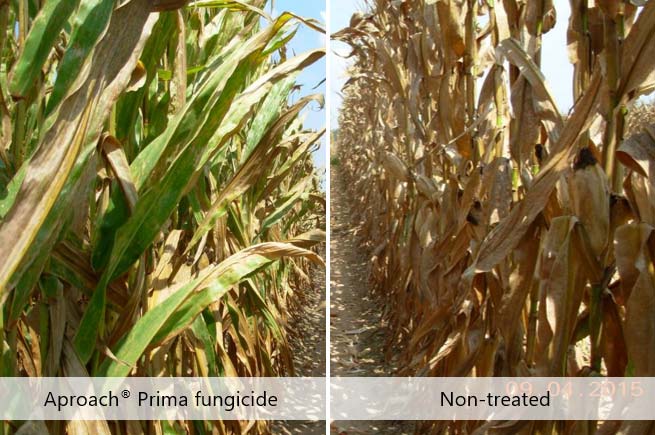Leverage our extensive testing data in many environments to find the best planting rate for your product with our Planting Rate Estimator.
Use ToolKey Points
- Corn yield potential in the Southern U.S. generally declines when planting is delayed beyond April; however, good yields are still achievable through mid-May in many areas.
- Late-planted corn generally develops at a faster rate due to greater heat unit accumulation, which can affect the timing window for herbicide and nitrogen applications.
- Additional management of late-planted corn may be required to minimize yield-limiting factors such as heat stress, insect pressure, and disease pressure.




AVBL,YGCB,HX1,LL,RR2 (Optimum® Leptra®) - Contains the Agrisure Viptera® trait, the Bt trait, the Herculex® I gene, the LibertyLink® gene, and the Roundup Ready® Corn 2 trait. HX1 - Contains the Herculex® I Insect Protection gene which provides protection against European corn borer, southwestern corn borer, black cutworm, fall armyworm, western bean cutworm, lesser corn stalk borer, southern corn stalk borer, and sugarcane borer; and suppresses corn earworm. YGCB - The Bt trait gene offers a high level of resistance to European corn borer, southwestern corn borer and southern cornstalk borer; moderate resistance to corn earworm and common stalk borer; and above average resistance to fall armyworm. LL - Contains the LibertyLink® gene for resistance to Liberty® herbicide. RR2 - Contains the Roundup Ready® Corn 2 trait that provides crop safety for over-the-top applications of labeled glyphosate herbicides when applied according to label directions. Roundup Ready® is a registered trademark used under license from Monsanto Company. Agrisure Viptera® is a registered trademark of, and used under license from, a Syngenta Group Company. Agrisure® technology incorporated into these seeds is commercialized under a license from Syngenta Crop Protection AG. Liberty®, LibertyLink® and the Water Droplet Design are trademarks of BASF.
The foregoing is provided for informational use only. Please contact your Pioneer sales professional for information and suggestions specific to your operation. Product performance is variable and depends on many factors such as moisture and heat stress, soil type, management practices and environmental stress as well as disease and pest pressures. Individual results may vary. Pioneer® brand products are provided subject to the terms and conditions of purchase which are part of the labeling and purchase documents.
